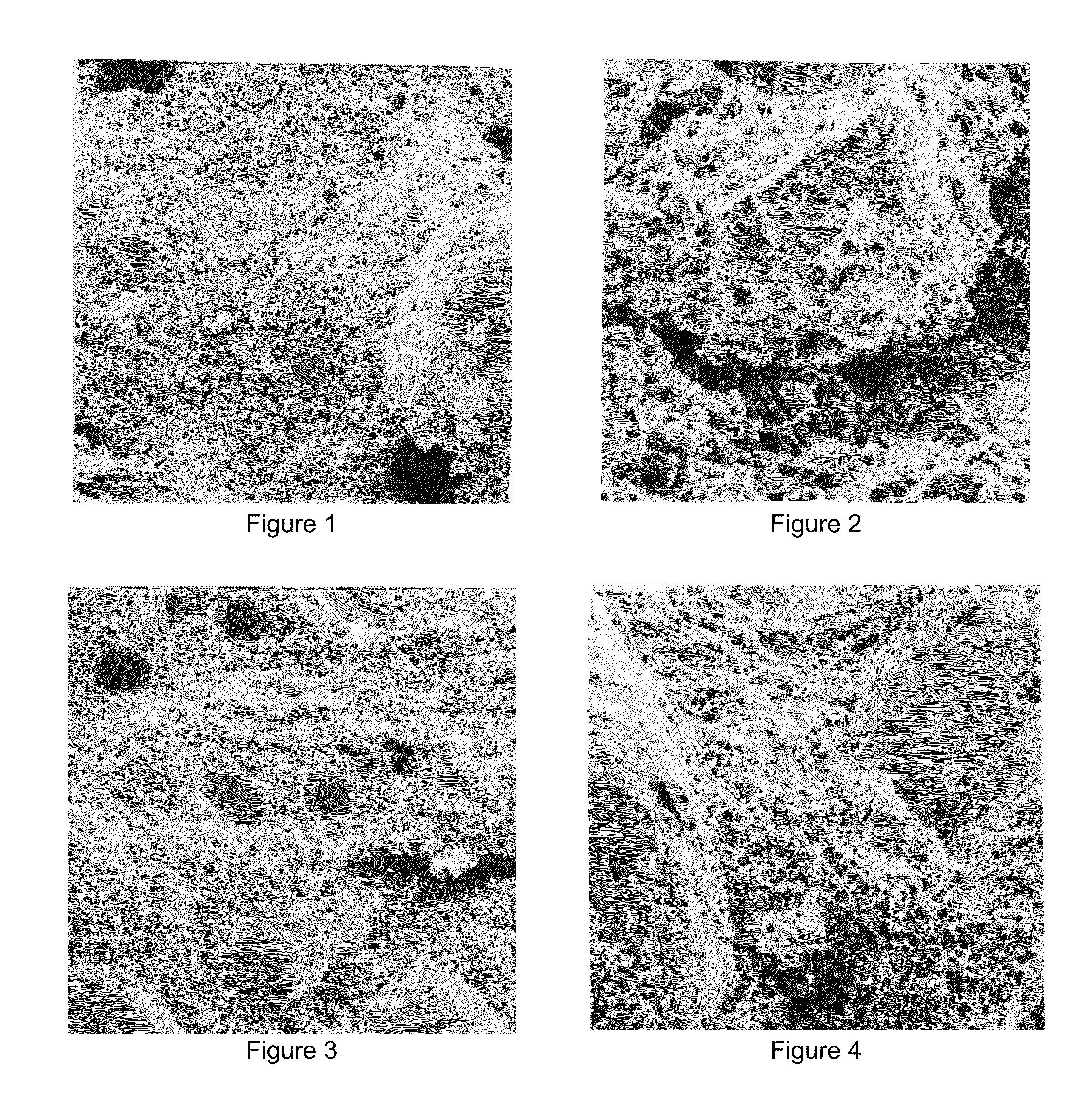Flexible polymer concrete and methods for making flexible polymer concrete
a polymer concrete and flexible technology, applied in the field of flexible portland cement polymer concrete and methods, can solve the problems of relatively low tensile strength of concrete, small ability to flex without cracking, and large amount of reinforcing materials, so as to achieve greater tensile strength and flexibility, less susceptible to wear, and less susceptible to cracking
- Summary
- Abstract
- Description
- Claims
- Application Information
AI Technical Summary
Benefits of technology
Problems solved by technology
Method used
Image
Examples
example
[0054]Table 1 lists general mix parameters for a concrete according to the invention.
[0055]
TABLE 1General MixTotal Aggregate40 weight % to 80 weight %Portland Cement10 weight % to 40 weight %Water1 weight % to 20 weight %Superplasticizer0.1 weight % to 2 weight %Styrene Resin1 weight % to 20 weight %Nitrogen Void Volume5 to 30 volume % of pasteTotal Paste20 weight % to 60 weight %Water / Cement Ratio by weight0.02 to 2.0Resin / Paste Ratio by volume0.01 to 1.0Gas Void Ratio to Resin Volume0.3 to 0.7
[0056]Table 2 lists one non-limiting example mix for a concrete according to the invention.
[0057]
TABLE 2Example MixWeightMaterial(lbs.)Weight %Volume %Aggregate - Sand11.000057.53%Total Aggregate11.000057.53%Portland Cement Type One5.000026.15%Water2.000010.46%Superplasticizer (naphthalene-0.09430.49%formaldehyde condensate)Styrene Resin =1.02495.36%1 part polystyrene -4 parts styrene monomerNitrogen Void Volume10% of pasteTotal Paste8.119342.47%Mix Total19.1193Water / Cement Ratio by weight0.4...
PUM
| Property | Measurement | Unit |
|---|---|---|
| diameter | aaaaa | aaaaa |
| diameter | aaaaa | aaaaa |
| diameter | aaaaa | aaaaa |
Abstract
Description
Claims
Application Information
 Login to View More
Login to View More - R&D
- Intellectual Property
- Life Sciences
- Materials
- Tech Scout
- Unparalleled Data Quality
- Higher Quality Content
- 60% Fewer Hallucinations
Browse by: Latest US Patents, China's latest patents, Technical Efficacy Thesaurus, Application Domain, Technology Topic, Popular Technical Reports.
© 2025 PatSnap. All rights reserved.Legal|Privacy policy|Modern Slavery Act Transparency Statement|Sitemap|About US| Contact US: help@patsnap.com

